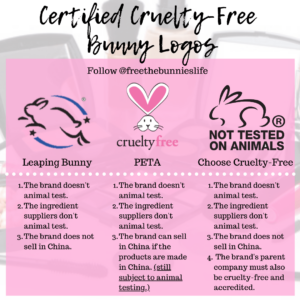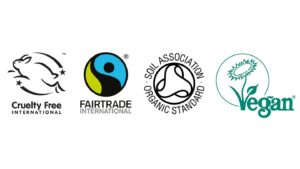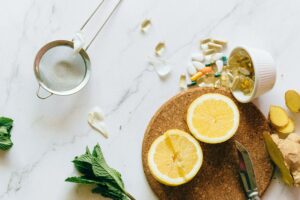As women, makeup is a staple for most of us (albeit decreased in usage since quarantine for
myself). I honestly don’t feel prepared for the day without at least a layer of mascara…somehow it really does
help me look more awake!
Over the years, my preference (and application, HA!) of makeup has advanced with the times. I remember wearing
blue eyeshadow and a THICC face of foundation in high school. Matching the color to my actual skin tone was a
practice I had never heard of, according to all the photos under my bed. I also definitely wasn’t concerned with
the ethics of the beauty companies I bought/wore. As women, makeup is a staple for most of us (albeit decreased
in usage since quarantine for myself). I honestly don’t feel prepared for the day without at least a layer of
mascara…somehow it really does help me look more awake!
Over the years, my preference (and application, HA!) of makeup has advanced with the times. I remember wearing
blue eyeshadow and a THICC face of foundation in high school. Matching the color to my actual skin tone was a
practice I had never heard of, according to all the photos under my bed. I also definitely wasn’t concerned with
the ethics of the beauty companies I bought/wore.
Thankfully, much of that is changed. I have been educated (and educated myself) on animal testing, chemical
ingredients and the harmful impacts on our environment that many major beauty companies impart. I now only shop
from companies I know are 100% cruelty-free and organic. I want to feel good about my purchases, and in part
have that goodness replicated on my skin.
My hope is that this blog opens your eyes up to some new opportunities for makeup/skin care and provides
resources for you to do your own research! I ask that you start here, and check out if your current products are
on this cruelty-free beauty guide.
Cruelty-Free
It’s incredible, that in this day and age, there is still animal testing going on, especially with so many
alternatives that aren’t harmful to innocents, and are financially accessible. Did you know the EU has banned
all animal testing?
There are two major alternatives to animal testing:
In-vitro, meaning “in glass”. This is a test done outside of a living organism. For the makeup industry, this
involves cell lines and reconstructed models of the skin and cornea.[1]
There are also cultured cell tissues as well as computer models that can be used to replace animal testing
practices.
It’s incredibly important to understand what to look for. Here are the big 3 logo’s you’ll see regarding
cruelty-free makeup:

Money Talks
Some brands are known to strategically word their statements claiming they don’t partake in animal testing, but
they may circumvent that by contracting other parties to do it on their behalf. It’s very challenging to know
who is truly cruelty free, so it’s important to do your research, find credible sources and understand what the
logos mean.[2]
Once you feel confident in the brands of your choice, use your spending power to create change. Every time you
buy something, you’re sending the message that you want more of that thing. The same is true of the opposite.[3]
This is one of the reasons to choose organic and vegan makeup as well as cruelty-free. That way you can be
confident in the quality and morality of the ingredients being put in your makeup.
Organic, Vegan, Clean
Sadly, there is no legal definition of requirement to label a product as natural, organic or vegan. The only
legal requirement is to list ingredients. According to the FDA website, they do not require cosmetic products
and ingredients, except for color additives, to be approved by FDA before they go on the market.[4]
That’s why it’s so important to do your due diligence prior to purchase. Again, look for logos that are vetted
and honest. Also, check out the Think Dirty App. It scans your cosmetic ingredients and gives you the lowdown on
what exactly is inside. It also grades ingredients on a ‘Dirty Metre’, too.

Go Synthetic
Many of us apply our makeup with brushes that are real animal hair. Make the switch to synthetic brushes,
especially because their bristles naturally gravitate toward each other, allowing for more precise, smooth and
streak-free application.
At the end of the day, we are all responsible for our choices. We practice compassion daily to those we come in
contact with. Take a small step forward to pass that compassion off to your skin!
[1] https://www.bioalternatives.com/en/how-is-in-vitro-testing-done/
[2] https://www.marieclaire.com/beauty/g28916053/cruelty-free-makeup-brands/
[3] https://evxocosmetics.com/pages/why-choose-cruelty-free-cosmetics
[4] https://www.fda.gov/cosmetics/resources-industry-cosmetics/small-businesses-homemade-cosmetics-fact-sheet#1




